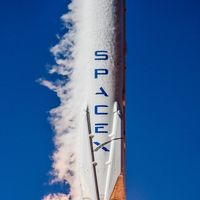Musk's AI Empire Expands: The Acquisition of X
March 31, 2025, 4:31 am

Location: United States, Montana, Great Falls
Employees: 1001-5000
Founded date: 1935

Location: United States, District of Columbia, Washington
Employees: 5001-10000
Founded date: 2002
Total raised: $7.53B

Location: United States, Kansas, Winfield
Employees: 1001-5000
Founded date: 2011
Total raised: $820K
Elon Musk is a master of reinvention. He has turned electric cars into a household name and rockets into a routine affair. Now, he’s merging the worlds of social media and artificial intelligence. In a bold move, Musk’s xAI has acquired X, the platform formerly known as Twitter, in a deal valued at $33 billion. This acquisition is not just a business transaction; it’s a strategic play that intertwines the future of social media with the burgeoning field of AI.
The deal, which values xAI at a staggering $80 billion, is an all-stock transaction. It includes $12 billion in debt, making the total price tag for X around $45 billion. Musk’s vision is clear: combine the vast data troves of X with the cutting-edge capabilities of xAI to create a powerhouse in AI development. He sees the future as a fusion of data, models, and talent. This merger is not just about numbers; it’s about creating a new ecosystem where AI can thrive.
Musk’s ambition is palpable. He has stated that the futures of xAI and X are “intertwined.” This is more than a business strategy; it’s a declaration of intent. By integrating X’s vast user data with xAI’s advanced algorithms, Musk aims to enhance the capabilities of Grok, his AI chatbot. Grok is designed to learn and adapt, and with access to real-time data from X, its potential is limitless.
However, the specifics of this deal remain murky. How will the leadership of X fit into the new structure? Will there be regulatory hurdles? These questions linger in the air like smoke from a distant fire. Musk has not sought investor approval for this move, which raises eyebrows. It appears he is consolidating power, making decisions that could reshape the landscape of both social media and AI without the usual checks and balances.
The financial implications are significant. Saudi investor Prince Alwaleed bin Talal, a major stakeholder in both X and xAI, has expressed optimism about the deal. He anticipates that the value of his investments could soar to between $4 billion and $5 billion. This sentiment reflects a broader trend: as AI becomes a focal point for investors, the appetite for exposure to AI companies is growing.
Analysts are watching closely. The price tag of $45 billion, including debt, is not coincidental. It’s a strategic move, $1 billion higher than the previous take-private transaction for Twitter in 2022. This indicates a calculated approach by Musk, positioning himself and his companies for future growth.
Musk’s xAI is relatively new, having launched less than two years ago. Yet, it has already raised $10 billion in funding, showcasing the confidence investors have in its potential. Competing against giants like Microsoft-backed OpenAI and Chinese startup DeepSeek, xAI is ramping up its capabilities. Its supercomputer cluster, dubbed “Colossus,” is touted as the largest in the world, a testament to Musk’s commitment to pushing the boundaries of AI.
The timing of this acquisition is also telling. As competition in AI heats up, Musk is not just playing catch-up; he’s aiming to lead the pack. The integration of X into xAI could serve as a distribution channel for AI products, providing a real-time feed of user-generated content. This could revolutionize how AI learns and adapts, creating a feedback loop that enhances its capabilities.
Yet, the road ahead is not without obstacles. Musk’s acquisition of X has been marred by controversy. After taking over Twitter, he drastically reduced the workforce, leading to a mass exodus of advertisers. Recently, however, brands have begun to return, possibly due to Musk’s growing influence in the Trump administration. This shift in sentiment could signal a recovery for X, but the scars of the past remain.
Moreover, Musk is currently embroiled in legal battles. A U.S. judge recently rejected his bid to dismiss a lawsuit claiming he defrauded former Twitter shareholders by delaying the disclosure of his investment. This legal cloud hangs over his ventures, potentially impacting investor confidence.
The banks that financed Musk’s acquisition of X have also played a crucial role in this narrative. They held onto $13 billion in loans for two years before selling the debt, capitalizing on a surge in investor interest in AI. This move indicates a strategic pivot, as the financial landscape shifts to accommodate the growing demand for AI exposure.
In conclusion, Musk’s acquisition of X by xAI is a bold step into uncharted territory. It’s a gamble that could pay off handsomely or backfire spectacularly. The integration of social media and AI is a tantalizing prospect, one that could redefine how we interact with technology. As Musk consolidates his power, the world watches with bated breath. Will this merger create a new titan in the tech industry, or will it crumble under the weight of its own ambition? Only time will tell.
The deal, which values xAI at a staggering $80 billion, is an all-stock transaction. It includes $12 billion in debt, making the total price tag for X around $45 billion. Musk’s vision is clear: combine the vast data troves of X with the cutting-edge capabilities of xAI to create a powerhouse in AI development. He sees the future as a fusion of data, models, and talent. This merger is not just about numbers; it’s about creating a new ecosystem where AI can thrive.
Musk’s ambition is palpable. He has stated that the futures of xAI and X are “intertwined.” This is more than a business strategy; it’s a declaration of intent. By integrating X’s vast user data with xAI’s advanced algorithms, Musk aims to enhance the capabilities of Grok, his AI chatbot. Grok is designed to learn and adapt, and with access to real-time data from X, its potential is limitless.
However, the specifics of this deal remain murky. How will the leadership of X fit into the new structure? Will there be regulatory hurdles? These questions linger in the air like smoke from a distant fire. Musk has not sought investor approval for this move, which raises eyebrows. It appears he is consolidating power, making decisions that could reshape the landscape of both social media and AI without the usual checks and balances.
The financial implications are significant. Saudi investor Prince Alwaleed bin Talal, a major stakeholder in both X and xAI, has expressed optimism about the deal. He anticipates that the value of his investments could soar to between $4 billion and $5 billion. This sentiment reflects a broader trend: as AI becomes a focal point for investors, the appetite for exposure to AI companies is growing.
Analysts are watching closely. The price tag of $45 billion, including debt, is not coincidental. It’s a strategic move, $1 billion higher than the previous take-private transaction for Twitter in 2022. This indicates a calculated approach by Musk, positioning himself and his companies for future growth.
Musk’s xAI is relatively new, having launched less than two years ago. Yet, it has already raised $10 billion in funding, showcasing the confidence investors have in its potential. Competing against giants like Microsoft-backed OpenAI and Chinese startup DeepSeek, xAI is ramping up its capabilities. Its supercomputer cluster, dubbed “Colossus,” is touted as the largest in the world, a testament to Musk’s commitment to pushing the boundaries of AI.
The timing of this acquisition is also telling. As competition in AI heats up, Musk is not just playing catch-up; he’s aiming to lead the pack. The integration of X into xAI could serve as a distribution channel for AI products, providing a real-time feed of user-generated content. This could revolutionize how AI learns and adapts, creating a feedback loop that enhances its capabilities.
Yet, the road ahead is not without obstacles. Musk’s acquisition of X has been marred by controversy. After taking over Twitter, he drastically reduced the workforce, leading to a mass exodus of advertisers. Recently, however, brands have begun to return, possibly due to Musk’s growing influence in the Trump administration. This shift in sentiment could signal a recovery for X, but the scars of the past remain.
Moreover, Musk is currently embroiled in legal battles. A U.S. judge recently rejected his bid to dismiss a lawsuit claiming he defrauded former Twitter shareholders by delaying the disclosure of his investment. This legal cloud hangs over his ventures, potentially impacting investor confidence.
The banks that financed Musk’s acquisition of X have also played a crucial role in this narrative. They held onto $13 billion in loans for two years before selling the debt, capitalizing on a surge in investor interest in AI. This move indicates a strategic pivot, as the financial landscape shifts to accommodate the growing demand for AI exposure.
In conclusion, Musk’s acquisition of X by xAI is a bold step into uncharted territory. It’s a gamble that could pay off handsomely or backfire spectacularly. The integration of social media and AI is a tantalizing prospect, one that could redefine how we interact with technology. As Musk consolidates his power, the world watches with bated breath. Will this merger create a new titan in the tech industry, or will it crumble under the weight of its own ambition? Only time will tell.